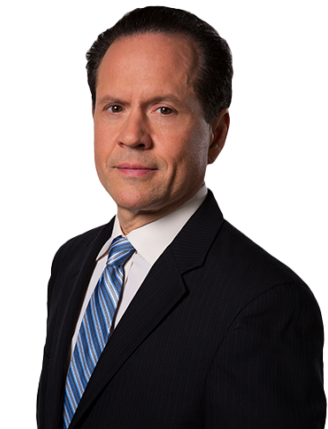Managing multiple insurance claims after a car accident can feel overwhelming. Between conflicting demands from different insurers and the stress of recovering from the accident itself, it’s easy to feel lost. For those in Las Vegas, the situation can be even more complex, given Nevada’s specific insurance laws and fault-based system. Jack Bernstein Injury Lawyers understand these challenges and can help you navigate the process, protect your rights, and ensure you receive the compensation you deserve. Let us guide you through the confusion so you can focus on moving forward.
Who Are the Involved Insurance Companies and How Does Nevada Car Insurance Work?
After a car accident, identifying all the involved insurance companies is the first step to understanding your situation. Nevada follows a fault-based system to determine who pays for damages, but things can get complicated when multiple parties and policies come into play. In cases where responsibility is shared, how Nevada law handles multiple at-fault parties can directly influence the outcome of your claim. Knowing which insurers are involved—and how state insurance rules apply—can bring much-needed clarity in an otherwise overwhelming situation.
Identifying the Involved Insurance Companies
In an accident involving multiple parties, there may be several insurance policies at play. Here’s how to determine who’s involved:
- Your Insurance Company: Notify your insurer immediately after the accident. They’ll play a key role, whether you’re filing a claim under your policy or defending against liability claims.
- Other Drivers’ Insurance Companies: Each driver involved in the accident should provide their insurance information, as their policies may cover your damages if they’re found at fault.
- Passenger Insurance (if applicable): Passengers injured in the accident might have their own policies that come into play.
- Third-Party Insurance: In some cases, you may need to deal with insurance for businesses (e.g., if a commercial vehicle was involved) or property owners (e.g., if a structure was damaged).
Quick Tip: Exchange insurance and contact information with all involved parties at the accident scene, if possible. This simplifies the claims process.
Nevada’s Fault-Based Insurance System
Nevada operates under a fault-based system, meaning the insurance company for the at-fault driver is generally responsible for covering damages. However, when fault is shared between drivers, things can quickly become more complex. Disputes over liability are common, and knowing how to dispute an insurer’s fault determination can be essential in protecting your claim. Key aspects of Nevada’s insurance system include:
- Comparative Negligence Rule: Nevada follows a modified comparative negligence rule. If you’re less than 50% at fault, you can still recover damages—though your compensation is reduced by your share of the blame.
- For example, if you’re 20% at fault and your damages total $10,000, you’ll receive $8,000.
- Proving Fault: Fault is determined based on evidence, including police reports, witness statements, and, in some cases, accident reconstruction.
Multiple insurers may argue over fault to avoid paying. This is why having clear evidence and legal support is crucial.
Nevada’s Minimum Car Insurance Requirements
Every driver in Nevada is required to carry minimum liability insurance to cover damages in case of an accident:
| Coverage Type | Minimum Amount Required |
|---|---|
| Bodily Injury Liability | $25,000 per person |
| $50,000 per accident (2+ people) | |
| Property Damage Liability | $20,000 per accident |
These coverage limits are designed to protect other drivers and property owners if you’re at fault. Still, they may fall short in more serious crashes. Knowing how bodily injury liability insurance works in Nevada can help you evaluate whether additional coverage might be necessary.
The Role of PIP Coverage in Nevada
While Nevada is not a no-fault state, Personal Injury Protection (PIP) coverage is an optional add-on for medical expenses, lost wages, and other costs, regardless of fault. This can be particularly helpful in multi-car accidents, where fault determination might delay claims.
Important Note: PIP coverage doesn’t absolve you from dealing with liability claims. It simply provides additional financial protection for immediate needs.
Determining Liability and Coverage in a Multi-Car Accident in Nevada
When multiple vehicles are involved in a car accident, determining who is at fault can be a complicated process. Nevada’s fault-based system adds further complexity when there are conflicting accounts or shared responsibility. Understanding how liability and coverage are determined in multi-car accidents is crucial for protecting your rights and resolving claims efficiently.
How Fault is Determined in Nevada
Nevada uses a modified comparative negligence rule, assigning fault as a percentage to each party involved in an accident. This approach means your ability to recover damages depends on how much responsibility you share. Here’s how fault is typically determined:
- Police Reports: Officers at the scene document key details, such as driver statements, witness accounts, and visible evidence. Their report often carries significant weight in determining fault.
- Witness Statements: Neutral third-party accounts of the accident can help clarify what happened and support your version of events.
- Accident Reconstruction: In complex cases, experts may reconstruct the accident to determine how it occurred and assign fault.
If you’re found less than 50% at fault, you can still pursue compensation under Nevada’s comparative negligence rule.
Types of Insurance Coverage in Multi-Car Accidents
Different types of insurance come into play depending on the circumstances and the policies involved:
- Liability Coverage: Pays for damages and injuries caused by the at-fault party.
- In Nevada, the minimum required is $25,000 per person and $50,000 per accident for bodily injury, plus $20,000 for property damage. Understanding how bodily injury liability coverage works can help clarify how this protection applies in complex collisions.
- Collision Coverage: Optional coverage under your policy that pays for repairs to your vehicle, regardless of fault.
- Comprehensive Coverage: Covers non-collision-related damages (e.g., weather damage, theft) and is typically optional.
- Uninsured/Underinsured Motorist (UM/UIM) Coverage: Offers protection when the at-fault driver lacks sufficient insurance or has none at all. In those cases, pursuing legal action against an uninsured driver may also become necessary to recover your losses.
Insight: UM/UIM coverage is especially important in multi-car accidents where multiple parties may have inadequate insurance.
The Importance of Evidence in Liability Disputes
In multi-car accidents, insurers often dispute liability to minimize payouts. Here’s how evidence strengthens your case:
- Photos of the accident scene, damage, and injuries.
- Copies of the police report.
- Documentation of medical treatment and property repair costs.
By gathering and organizing this evidence, you can build a stronger case, even in complex multi-car scenarios.
Communicating with Multiple Insurance Companies After an Accident
Dealing with multiple insurance adjusters after an accident can feel overwhelming. Each company has its own interests, and conflicting requests or demands can lead to confusion. Knowing how to communicate effectively can protect your rights and prevent costly mistakes.
Tips for Dealing with Insurance Adjusters
When speaking with insurance adjusters, keep these key points in mind:
- Stick to the Facts: Provide only factual information about the accident. Avoid speculation or admitting fault.
- Don’t Provide Recorded Statements: Insurers may use your words against you later. Decline recorded statements until you’ve spoken with an attorney.
- Document Everything: Keep records of all written and verbal communication, including dates, times, and the names of people you spoke with.
Conflicting statements or inaccurate information can harm your case. Be consistent and careful when sharing details.
Handling Conflicting Information or Requests
When multiple insurers are involved, you might receive inconsistent or conflicting requests. For example:
- One insurer might request additional documentation you’ve already provided to another.
- Insurers may dispute liability and blame other parties to avoid payouts.
To manage these challenges:
- Centralize all your documentation to ensure consistency.
- Consult with an attorney to ensure your responses align with your best interests.
How a Las Vegas Personal Injury Attorney Can Help with Multiple Insurance Claims
Navigating the complexities of multiple insurance claims after an accident is no small task. Each insurer has its own priorities, and without experienced guidance, you could be left with reduced compensation or denied claims altogether. A skilled personal injury attorney can make all the difference, particularly in a fault-based state like Nevada.
Simplifying Complex Multi-Insurer Situations
An experienced attorney like Jack Bernstein can help untangle the web of multiple claims and ensure that all responsible parties are held accountable. This includes:
- Identifying All Relevant Policies: From liability and UM/UIM to potential PIP coverage, your attorney will review all applicable policies to make sure no source of compensation is missed. If one of the insurers refuses to pay, knowing how to respond to a denied claim becomes essential to protecting your case.
- Clarifying Fault: By analyzing evidence and consulting with accident reconstruction experts if needed, your lawyer can establish fault and counter any unfair liability claims made against you.
Negotiating with Insurance Companies
Insurance companies prioritize their bottom line, not your well-being. A personal injury attorney advocates for you by:
- Communicating directly with adjusters to protect your rights.
- Ensuring insurers don’t exploit your lack of experience or misinterpret your statements.
- Negotiating fair settlements that reflect the full extent of your injuries, property damage, and other losses.
These negotiations can be tough, especially when insurers use familiar strategies to minimize payouts. Understanding how to counter common insurance tactics can make a significant difference in protecting your claim.
Maximizing Compensation
Multi-car accidents often involve significant damages, from medical bills to lost wages and pain and suffering. An attorney can:
- Calculate the True Value of Your Claim: By factoring in current and future costs, including ongoing medical needs or long-term effects of the accident.
- Avoid Common Pitfalls: Like accepting a lowball settlement or failing to include future damages in your claim.
With over 40 years of experience, Jack Bernstein Injury Lawyers know how to fight for every dollar you’re owed.
Next Steps: Protect Your Rights
After a car accident involving multiple insurers, the steps you take immediately can greatly impact your health, finances, and legal rights. Acting quickly and strategically ensures you don’t miss critical opportunities for compensation or jeopardize your case.
Steps to Take Right Now
- Gather Key Information:
- Insurance details from all involved parties.
- Police reports, photos of the accident scene, and any witness contact information.
- Receipts and records for all related expenses.
- Notify Your Insurer: Report the accident to your insurance company as soon as possible. Be honest and concise, but avoid speculation about fault until you’ve consulted an attorney.
- Document Everything: Keep a detailed record of all communications, medical treatments, and expenses related to the accident. This includes:
- Notes on conversations with adjusters.
- Medical bills and treatment plans.
- Repair estimates or invoices for your vehicle.
- Seek Legal Help: Consult with a personal injury attorney to assess your case and navigate the complexities of multiple insurance claims.
Quick Tip: Nevada’s statute of limitations for personal injury claims is two years. Don’t delay taking action, or you risk losing your right to compensation.
Contact Us for a Free Consultation
If you have been injured in an accident, contact Jack Bernstein Injury Lawyers for a free, no obligation consultation with experienced Las Vegas accident lawyers. You will gain an advocate for every stage in the claims process until you have the compensation you deserve.
Jack Bernstein Injury Lawyers is available to help you handle your injury claim in the Las Vegas metropolitan area and beyond. Jack Bernstein and his team can offer you the personalized service and legal representation you deserve after an accident.
Call us at (702) 633-3333 or contact us today for a free consultation to discuss your case.

